One topic comes up frequently here at The Aswang Project is Haliya, the Bicolano Deity of the moon. Unfortunately, the popular Haliya story in modern days comes from the same blogs that falsely spread the Bulan and Sidapa love affair as precolonial beliefs.
The following is the story that has been popularized. This article will examine which parts are fiction and which are Bicolano beliefs.
“Haliya is the masked goddess of the moonlight worshipped in pre-colonial Ibalon (present-day Bikol region) and in some parts of coastal Bisayas. Haliya was a warrior goddess who would wear a mask of gold to hide her beauty. In Philippine Mythology, Haliya was the name of a lunar goddess. She was said to be so beautiful that the sea goddess Bakunawa fell in love with her and sought her affections.”
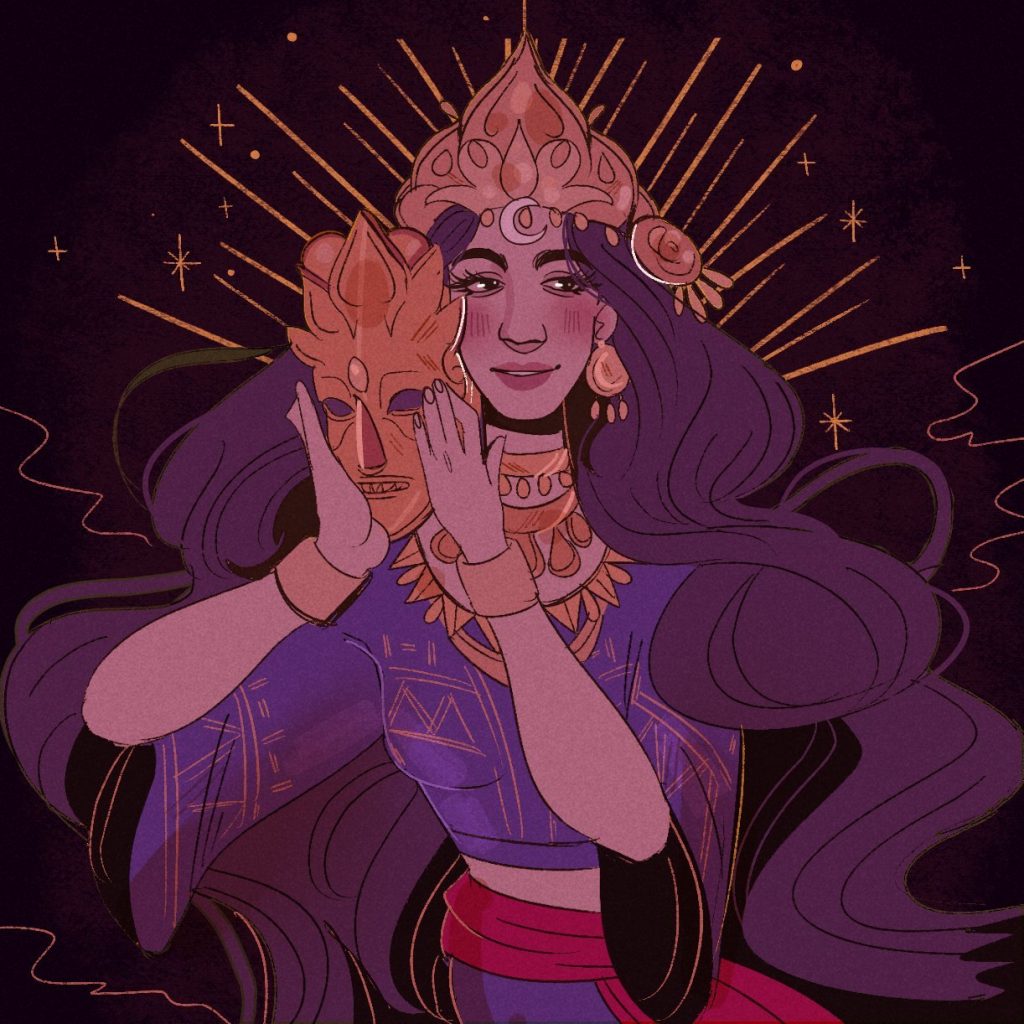
There has been some finger pointing and accusations that this is a fictional story as historical evidence regarding the moon deity is scarce. I decided I’m going to try and create a defense. This is actually my process when I am presented with a question I don’t know or understand – I try to defend it instead of immediately trying to gather evidence to prove it incorrect. After this process, I can decide what is fact and what is fiction, based on historical record. At the same time, if this is a story passed down from someone’s Lola, then that is a truth in itself.
HALIYA, the name:
While the exact etymology of the name may be unknown, we can trace it through history, migrations and influences that reached the Philippine Islands. This part of the article is presented in a completely speculative form, but I believe it establishes enough evidence to reasonable acknowledge that the name Haliya could have existed in the pre-colonial Philippines and was a part of a Bicol tradition.
In Greek Mythology HALIA was a sea-nymph of the island of Rhodes loved by the god Poseidon. When her sons denied Aphrodite landing on the island, the goddess drove them into a mad frenzy causing them to rape their mother. Halia in shame cast herself into the sea and her sons were exiled by their father to the dark caverns beneath the island. According to the Rhodians Halia became Leukothea, although most accounts describe this goddess as the apotheosed Boiotian princess Ino.
The word Hellenistic comes from the Greek word meaning “imitating the Greeks.” Hellenism introduced and spread the Greek language, art, culture, political ideas, and philosophy across the Mediterranean and Middle East.
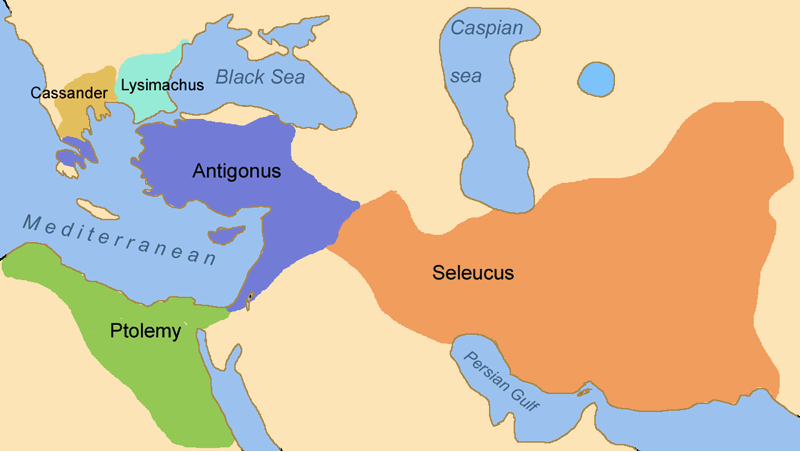
In Bugun, North Eastern Indian mythology, the name Halia appears in the the myth “The origin of thunder and lightning”:
In the sky lived the girl Halia and the boy Haklum. Though they were brother and sister, they lived far away from one another, for both were virgin. But although Halia did not like boys, her brother was very fond of girls. The trouble was that, apart from his sister, there was no other girl in all the earth or sky. So Haklum tried and still tries to make love to his sister. For fear of him she usually hides among the white clouds. But sometimes she comes out to wash her hair and it covers the sky and makes it dark. When Haklum sees this he knows that his sister is coining out and he tries to catch her. She is very angry at this and pulls the long pin from her hair and beats him with it. He runs away roaring like the thunder. Men on earth see the pin flashing as lightning across the sky. Sometimes Halia drops the pin and when this happens the lightning falls to earth and destroys a house or a tree.
Migration of Buguns to its present location are unknown. However, their mythology reveals that they have probably migrated from Tibet via East Kameng.
In Sri Lanka, the ritual of the planetary deities is termed Bali after the figures of the same name which are used in the ritual. The term ‘haliya‘ (pl.: balt) means ‘figure’ or ‘
Haliyah is an Arabic name for girls in which one of the meanings is “adorned with jewellery”.
The name also appears in Malaysia as Halijah.
Halia is also an ethnic group and language in Papua New Guinea.
Halia is known as a girl’s name in Hawaii.
In SHORT GLIMPSE ON THE ORIGIN, RELIGION, BELIEFS AND SUPERSTITIONS OF THE ANCIENT NATIVES OF BICOL by Fray Jose Castaño – 1895 it is mentioned “One of the fiestas that celebrated with more apparatus and agaraba, the dreadful noise of drums, atables and balalongs or recessed logs, was dedicated to the moon in full, a party that they called Halia.”

HALIYA, the deity:
It has been established that there was a ritual called halia or halya that was performed during a full moon to dissuade Bakuanwa from swallowing it. The full documentation of Castaño’s text is:
“One of the fiestas that celebrated with more apparatus and agaraba, the dreadful noise of drums, atables and balalongs or recessed logs, was dedicated to the moon in full, a party that they called Halia. And they made this party with such a deafening and truly wild noise, to prevent the Baconaua, a harmful and very warped animal, from swallowing the moon and leaving them in darkness, which they greatly felt, and those which they had as a sign of some future disaster or terrible misfortune that, ravaging their fecund soil, left them wrapped in the greatest misery. As the eclipses coincide with the full moon, they undoubtedly believed that the rainbow, which they called Hablong-dauani, was the work of an ancient and famous weaver whom they qualified by name, and what they said to be the mother of the weavers of later times. To avoid, then, that the Baconaua swallowed the moon, or rather to celebrate such a feast, the women of all tribes or duluhan used to gather together, and placed in two rows, forming a choir, they began to sing the excellences of the moon that with its beautiful and clear light towards the night splendid day, preserving the charms of a cool and calm temperature. This ceremony or superstitious rite used to lead to all, menu of tuba and carabao meat or wild boar, enlivened by the monotonous and languid compass of noisy zambra, dawned as lethargic and drunk, effect of the spirited liquor with wild abundance encaged in rough glasses of coconut shell, and distributed among the concurrent.”
Later documentation shows these rituals are said to be performed for Gugurang, the god of good.
From 1968 Unitas:- Volume 41 – Page 186 “The thanksgiving rites over, the people consumed the offerings in a boisterous and drunken celebration. The halya was a noisy feast-ritual to Gugurang that was held during the full moon to prevent the bakunawa from devouring the moon.”
From the 1971 Bikol Dictionary, “HÁLYA a ritual offered to the GUGÚRANG (god of goodness). The ritual is held on the nights of the full moon to frighten off the BAKUNÁWA, who would swallow the moon if not scared away. (Bikol mythology).”
I decided to do comparative studies to see if the story of Haliya could be found in the myth and literature that influenced Bicol. Many fables and stories in Filipino Culture are linked to Indian arts, such as the story of the monkey and the turtle, the race between deer and snail (slow and steady wins the race), and the hawk and the hen. Similarly, the major epics and folk literature of Philippines show common themes, plots, climax and ideas expressed in the Mahabharata and the Ramayana.

In Bali, a ceremony is held every purnama, or full moon, to celebrate the beauty of the Moon. This ceremony also honours Chandra, another lunar god.
Dewi Ratih, also known as Sang Hyang Ratih or Sang Hyang Semara Ratih, is a Hindu lunar goddess worshipped in Java and Bali. She is well known for her beauty and grace, thus she was also known as the Goddess of Beauty. Her myth is linked to lunar eclipses.
Due to Dewi Ratih rejecting him, Kala Rau the giant planned to attack Vishnuloka. When Kala Rau reached heaven on the form of Kuwera, a leading rakshasa who served the Gods, Ratih warned Vishnu that Kuwera was actually Kala Rau. Vishnu beheaded Kala Rau without knowing he had consumed the tirta amerta, a drink of gods that could make him immortal.
Because only his throat touched the tirta amerta, Kala Rau survived with his floating head. When the Moon came, Kala Rau would chase the goddess, and swallow Dewi Ratih in whole. But because he does not have his body, Dewi Ratih would soon emerge from his neck. In Bali and Java, this story is believed to be the origin of lunar eclipses.
In Hindu Epic, Ahalya (Sanskrit: अहल्या, IAST: Ahalyā) also known as Ahilya, is the wife of the sage Gautama Maharishi. Many Hindu scriptures say that she was seduced by Indra (the king of gods), cursed by her husband for infidelity, and liberated from the curse by Rama (an avatar of the god Vishnu).
Created by the god Brahma as the most beautiful of all women, Ahalya was married to the much older Gautama. In the earliest full narrative, when Indra comes disguised as her husband, Ahalya sees through his disguise but nevertheless accepts his advances. Later sources often absolve her of all guilt, describing how she falls prey to Indra’s trickery. In all narratives, Ahalya and Indra are cursed by Gautama. The curse varies from text to text, but almost all versions describe Rama as the eventual agent of her liberation and redemption. Although early texts describe how Ahalya must atone by undergoing severe penance while remaining invisible to the world and how she is purified by offering Rama hospitality, in the popular retelling developed over time, Ahalya is cursed to become a stone and regains her human form after she is brushed by Rama’s foot.
There are certainly similarities to the stories, so it is not beyond the realm of possibility that Ahalya’s attributes were applied to Haliya and incorporated into beliefs regarding the lunar eclipse – creating a Bicolano moon deity.
In Bikols of the Philippines (1983), in a chapter covering ancient Bikol poems, it is suggested by Maria Lilia F. Realubit that “there were poems about Gugurang and the goddess of the moon Halia.”
In the 1994 CCP Encyclopedia of Philippine Art: Peoples of the Philippines, Halia is mentioned as a goddess again, “The tarok step was originally a movement that belonged to the ancient ritual, atang. Quick marching steps were executed by the priest or priestess before the god of good, Gugurang, or by the tribal women before the moon goddess, Haliya.” Maria Lilia F. Realubit is credited as a source and an editor for this project.
The same passage is used in Realubit’s 1999 book Bikol Literary History.
While there is evidence to support the stories about a Bicolano moon deity named Haliya, one must examine it more closely when new source material is so inconsistent with what was previously documented. Maria Lilia F. Realubit is a very well respected author and for that reason her entries shouldn’t be dismissed, but instead further explored. Unfortunately she passed away in 2017, so we may never know the source of these entries. More field research is desperately needed throughout the Philippines.
Suzette Doctolero’s inclusion of this notion into the imaginary world of GMA’s television fantasy series Encantadia adds to the confusion.

Its haliya. In bicolnon mythology she is the gooddes of the moon. In enca she’s the goddess that lives in the twin moon of enca
— Suzette Doctolero (@SuziDoctolero) April 7, 2017
HALIYA’s Gold Mask:
While Haliya’s beauty and the need to hide it could be supported in comparisons to the Hindu story of Ahalya, I have always felt skeptical with the notion that she wore a mask of gold. While it creates beautiful imagery, it has only ever been mentioned in corrupted stories from blog accounts that have since been proven to contain fiction based on Philippine Mythologies meant to be passed as precolonial beliefs. While each ethnic group has their own unique traditions, I’m not sure the burial practice of covering the eyes, nose and mouth of the dead with sheets of gold would be so differently thought of in Bicol. The gold death mask is a custom of the southern Chinese practiced by a limited group of Filipinos – found in areas of Panay, Cebu, and Mindanao. It is believed that when the face of the dead is covered with a gold mask, evil spirits cannot enter the body. As far as masks and Philippine beliefs, this is as far as it seems to extend.
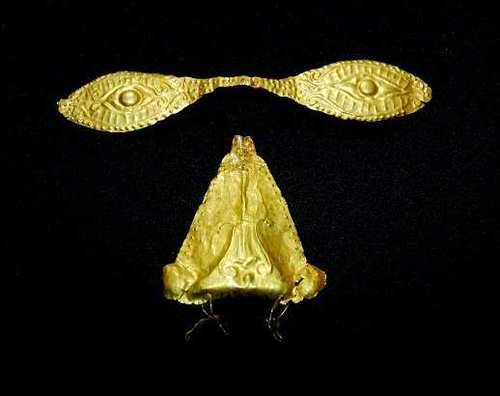
*Update January 2022* I began to communicate with the very talented artist, Duddley Diaz, where he shared the following regarding Haliya’s mask in his work:
“My only source was her [Prof. Lilia F. Realubit] oral recounting of the story. Haliya was a beautiful goddess. No mask was ever mentioned in her story nor was she a warrior goddess, it sounds more of Athena or the Amazons! . The mask on Haliya was my own artistic interpretation. I started putting the mask on her by 1989 in my sculpture exhibit at the then Pinaglabanan Gallery.
By early 2000s I had been reading in the web the definition of Haliya as a Bicolano masked moon goddess. If you look around there is no mention of a masked Haliya before 1989. I did think of unmasking Haliya a short time after. I did a sculpture in wood and a painting of Haliya unmasking but coincidentally or strangely both artworks perished in a fire in an art storage.
I have a different idea on Haliya’s mask. She didn’t need to forge a golden mask to hide her face! She was beautiful anyway. Haliya does not have any official iconography so I was free to give my own artistic interpretation. I wanted to make a more hieratic image of her holding a crescent moon in her pregnant state. An enthroned goddess. An image with the life she carries and protects within, it shows hope, looking forward, waiting for the future. The mask is there not to hide her face per se but the embodiment of the goddess herself. The mystery behind the goddess. We can never know her completely. You know that the mask has been so important in many ancient cultures, religion and rituals. I like looking at the Haliya story in relation to other myths and cultures.” ~Duddley Diaz (speaking on Haliya’s mask)
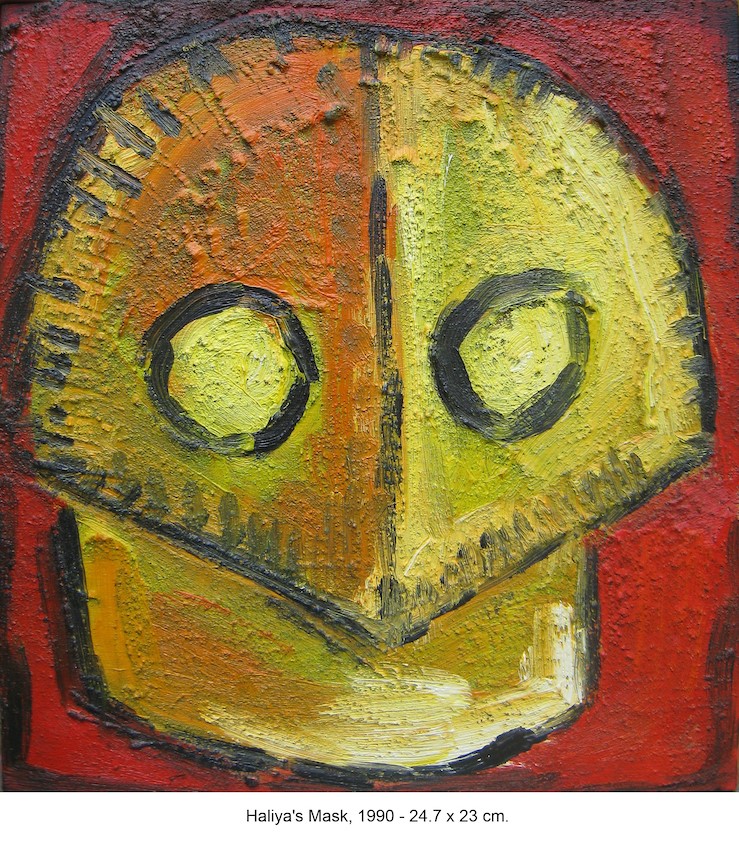
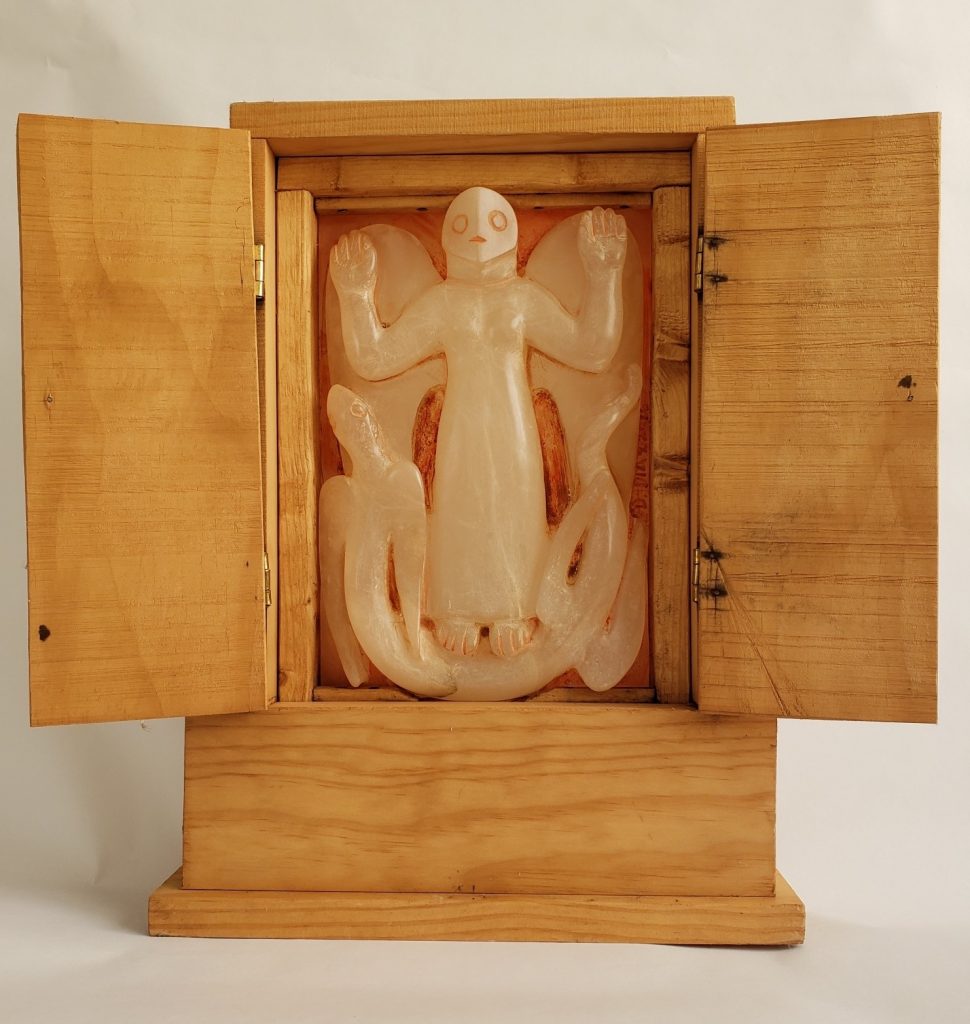
In conclusion, there was with certainty an ancient ritual performed in Bicol during the full moon called Halia/ Halya which was believed to frighten away Bakunawa. There is enough evidence to suggest that they may also have believed there was a beautiful moon deity called Haliya. The gold mask that Haliya was said to have worn to hide her beauty is something that has been interpreted in modern times from an artist’s creative work. That said, the story sure has inspired people to create some wonderful artwork.
SOURCES:
https://www.hellapinay.com/blog/2017/1/12/haliya-full-moon-in-cancer
“- H -.” Bikol Dictionary, by Malcolm W. Mintz, University of Hawai’i Press, Honolulu, 1971, pp. 152–167
Bikol Mharlika, Jose Calleja Reyes, JMC Press, 1992
Bikol literary history by Maria Lilia F. Realubit Published 1999
Made Taro. Cerita Rakyat Dari Bali 3 (Indonesian)
Diodorus Siculus, Bibliotheca historica 5.55.4–7
CCP Encyclopedia of Philippine Art, Cultural Center of the Philippines, 1994
Jordan Clark is a Canadian born descendant of Scottish immigrants living on the homelands of the Lekwungen speaking peoples. His interest in Philippine myth and folklore began in 2004. Finding it difficult to track down resources on the topic, he founded The Aswang Project in 2006. Shortly after, he embarked on a 5 year journey, along with producing partner Cheryl Anne del Rosario, to make the 2011 feature length documentary THE ASWANG PHENOMENON – an exploration of the aswang myth and its effects on Philippine society. In 2015 he directed “The Creatures of Philippine Mythology” web-series, which features 3 folkloric beings from the Philippines – the TIKBALANG, KAPRE and BAKUNAWA. Episodes are available to watch on YouTube. Jordan recently oversaw the editing for the English language release of Ferdinand Blumentritt’s DICCIONARIO MITOLÓGICO DE FILIPINAS (Dictionary of Philippine Mythology) and is working on two more releases with fellow creators scheduled for release later this year. When his nose isn’t in a book, he spends time with his amazing Filipina wife of 20 years and their smart and wonderful teenaged daughter.



